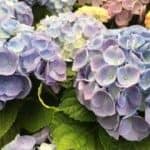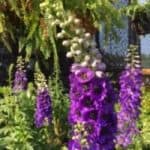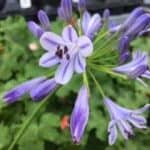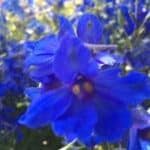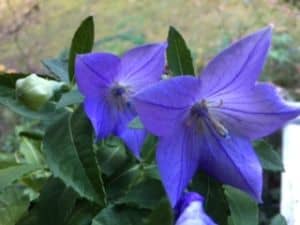
Blue is the New Black
It is the insects and other pollinators such as moths, for whom flower colors really exist and not for us. Pollination, and fruit production, is the main purpose of most flowers. The color we see in flowers is actually the result of reflected light from various plant pigments.
There is no true blue pigment in plants. Blue is even more rare in foliage than it is in flowers. The key ingredients for making blue flowers are the red anthocyanin pigments. Plants modify the red anthocyanin pigments to make blue flowers. This is done through a variety of modifications involving pH shifts and mixing of pigments, molecules and ions. These complicated alterations, combined with reflected light are the colors we see.

Here are a few blue flowering plants which can be planted now for eye catching blue color:
Balloon flower or Platycodon grandiflorus is a low growing herbaceous flowering perennial which blooms in full sun. Its’ flowers are blue and look like little star shaped balloons before opening up to blue-purple stars. White and pink varieties have been cultivated. Plants may die back in cold temperatures but returns in spring.
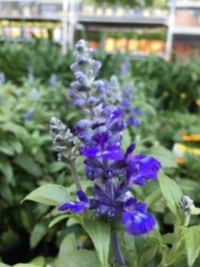
Plumbago or Plumbago auriculata, is semi woody shrub with vinelike characteristics. Has light blue, small, five-petaled flowers. It is a favorite perennial for full sun and prefers well drained, loose soil. Plumbago does well in the heat of summer.
Salvia ‘Saga Blue’ or Salvia farnicacea is a dark blue sage with spikey blooms. This perennial is sun loving and attracts hummingbirds and butterflies. Best in sun to part sun.
Lobelia or Lobelia erinus is an herbaceous perennial which is good for landscapes, hanging baskets and pots. The striking blue flowers are almost electric. Prefers full to part sun.
Candle Larkspur or Delphinium x cultorum is a medium tall perennial. It prefers full sun with tall purple stalks consisting of mini flowers.
Hydrangea can be blue depending on the soil. Acid soils cause them to be blue. Add aluminum sulfate to soil to turn pink flower to blue. Grows well in shade but flowers more in part sun.
Agapanthus has tall stems with summer funnel shaped flowers blooms in a round ball. Come in different shades of blue to purple and white. Blooms in full sun to part shade. Good for mass plantings.
submitted by Karen Blackburn

